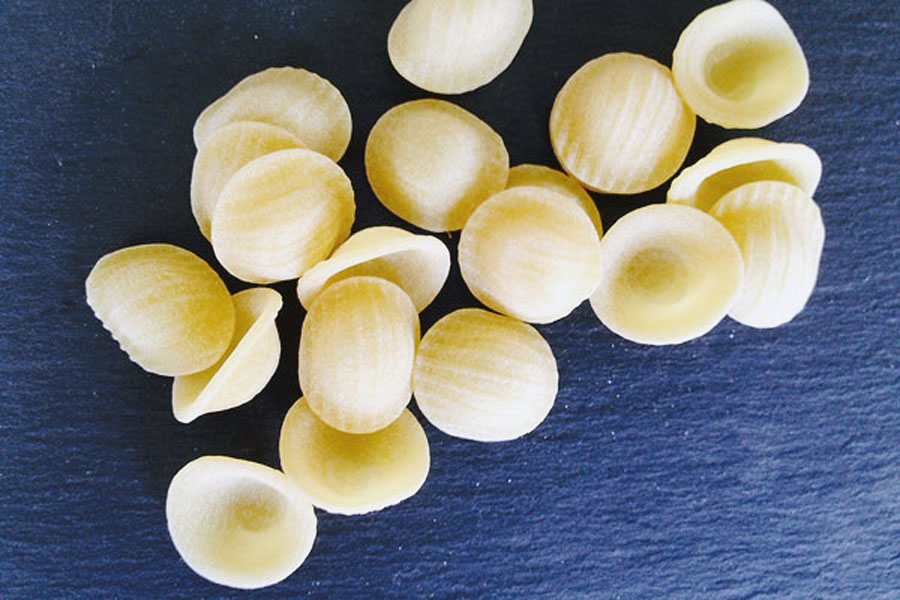Orecchiette Pasta
Other Names: |
Region: Puglia (Apulia) |
Made with: semolina flour and water |
About:Orecchiette is deeply rooted in the culinary traditions of Puglia (Apulia), a region in Southern Italy, often referred to as the “heel” of Italy’s boot. While its exact origins are shrouded in some mystery, several theories exist: 12th-13th Century Puglia: The most widely accepted theory places the birth of orecchiette in Bari, Puglia, between the 12th and 13th centuries. It’s considered a staple of the region’s peasant cuisine, characterized by simple ingredients: durum wheat semolina flour and water, with eggs rarely used. Provencal Influence: Some food historians suggest that the pasta may have been introduced to Southern Italy from Provence, France, during the 13th century by the Angevins (a noble family that ruled Puglia and Basilicata). In Provence, there was a similar medieval fresh pasta called “crosets,” which were hollow, disc-shaped, and designed for easy drying and transport. Ancient Roman Predecessor: A more ancient theory links orecchiette to “lixulae,” a type of round, concave pasta mentioned by the Roman writer Varro in the 1st century BCE. Jewish Community Influence: Another intriguing hypothesis suggests inspiration from traditional Jewish sweets, particularly “Orecchie di Aman” (Haman’s ears), small fried pastries eaten during Purim, which bear a resemblance to the ear shape. Regardless of its precise genesis, orecchiette became firmly established and perfected in Puglia. For centuries, it has been handcrafted by skilled artisans, often by “nonnas” (grandmothers) who can still be seen making it on the streets of Bari. This traditional method involves rolling the dough into a rope, cutting it into small pieces, and then using a knife or thumb to press and drag each piece, creating the characteristic “little ear” shape. Historically, orecchiette was considered a special occasion or Sunday pasta, often served with simple tomato sauce or meat ragù. Today, it remains a culinary icon of Puglia, most famously paired with cime di rapa (turnip tops), a traditional dish known as orecchiette alle cime di rapa. Other popular pairings include various vegetable-based sauces, simple tomato sauces with ricotta, or meat sauces with small meatballs. |
||

